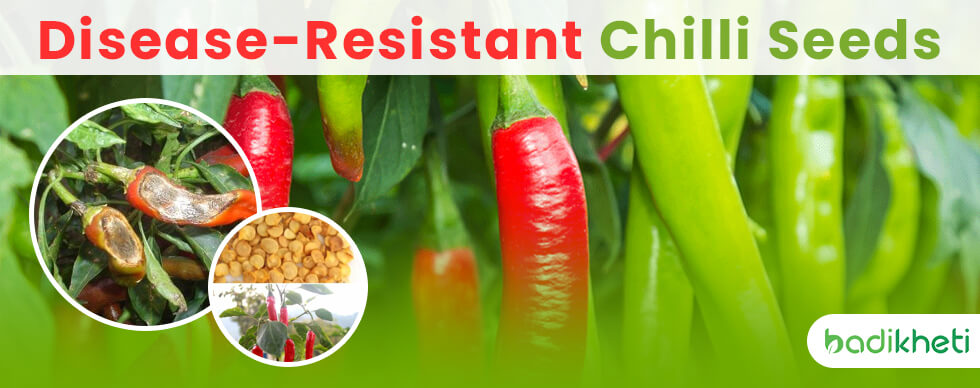
Spices constitute an essential element of Indian gastronomy, imparting richness, and piquancy to an array of recipes. Among them, a distinct position is held by chili peppers, which however face consistent threats from various diseases that can cause severe damage to crops.
Disease-resistant chili seeds have lately emerged as a revolutionary alternative to safeguard chilli farming in India. This write-up explores the prospective benefits of these types of chilli seeds and their significant impact on the future of Indian spice agriculture.
The cultivation of chilli in India encounters a multitude of obstacles, wherein the emergence of diseases poses a significant threat to both the yield and quality of chilli. A variety of ailments, such as bacterial wilt, powdery mildew, and mosaic viruses, can cause devastating losses to crops.
Traditionally, farmers have opted for pesticides and fungicides as a remedy against these diseases. Nevertheless, the employment of such chemical treatments has raised apprehensions regarding their ecological impact and potential danger to human health if improperly used.
The utilization of chilli seeds that are resistant to diseases is a viable and environmentally responsible approach to mitigating the issues faced during chilli farming. These seeds undergo intricate procedures such as hybridization and genetic alteration to augment the inherent immunity of chilli plants against harmful microorganisms.
Further, the incorporation of genes responsible for resistance in these plants has led to the development of varieties of chilli seeds that are capable of enduring disease pressures, thereby reducing dependence on chemical interventions the future of chilli farming is on its way to becoming safer and disease-free.
Chilli seeds that resist disease are a promising breakthrough in Indian chilli farming. They offer better yields, less need for chemicals, and higher-quality crops. As demand for chilli increases, it is important to ensure sustainable and resilient cultivation of chilli.
Introduction Chilli fondly known as "Mirchi" in Hindi holds great cultural and historical significance in India. It is not merely a culinary delight but an integral part of our traditions with significant links to agriculture and daily life. India takes great pride in being one of the leading producers and consumers of chillies globally, with various regions contributing to this spicy farming. This article aims to analyze the primary states involved in chilli cultivation within India, exploring their unique functions within the flourishing chilli industry....
The Indian economy is based on agriculture, and the farmer's livelihood relies on the rain in monsoon season. But it isn’t certain, so depending entirely on it may affect soil management and agricultural yields. Crops need a proper quantity of water for their development. The only means our farmers can keep storing and using water properly is via irrigation. In this blog, we will understand the irrigation methods for excellent water management for Indian farmers. Undoubtedly, the world’s agricultural area has increased in the past,...
Onions, also known as Pyaaz, or Kanda are the heart of India and are a lucrative cash crop for farmers here. If you’re looking to maximize onion seed growth and yields, there are certain farming practices that you have to consider. So, proper agricultural practices are critical to maximizing onion output and quality. For the best product, you must have quality onion seeds and proper agriculture equipment in place which you can buy from an online agriculture marketplace like BadiKheti. In this blog, we will...